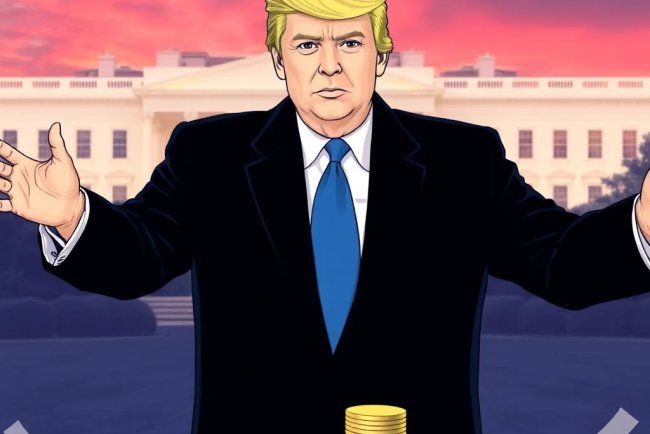Songadaymann sues SEC after using NFTs to sell songs he writes every day
Songadaymann sues the SEC after using NFTs to sell his daily songs. Discover the details and implications of this groundbreaking legal battle.

Jonathan Mann, known for his daily song creation for over 16 years, along with conceptual artist Brian L. Frye, has initiated a lawsuit against the U.S. Securities and Exchange Commission (SEC). The lawsuit questions whether NFTs representing their digital artworks should be classified as securities under U.S. law.
Background of the Case
- Daily Song Creation: Mann has been writing a song every day for 16 years and has gained recognition for his contributions to the crypto music scene.
- Protest Song: In a statement, Mann humorously noted, “This song is a security,” highlighting his stance against the SEC's regulations.
Details of the Lawsuit
- NFT Projects: Mann plans to release 10,420 NFTs featuring unique remixes of his song “This Song Is A Security,” while Frye aims to offer 10,320 NFTs under his project titled “Cryptographic Tokens of Material Financial Benefit.”
- Remix Project: Mann stated that he has created approximately 300 layers for the remixes, which will be programmatically combined into unique NFTs, pending a favorable court ruling.
SEC's Regulatory Approach
- Concerns Over SEC Actions: The plaintiffs argue that the SEC's recent enforcement actions against other NFT projects, such as Stoner Cats and Impact Theory, unfairly extend securities regulations to digital art.
- Howey Test Interpretation: They contend that the SEC's broad interpretation of the Howey test, which determines what constitutes an investment contract, could encompass all forms of art and collectibles, not just NFTs.
Implications for Artists
- Impact on Creativity: Mann and Frye express concern that the SEC's lack of clear guidelines could hinder creativity and innovation in the digital art space.
- Art and Securities Laws: They argue that selling art, whether physical or digital, should not require compliance with securities laws simply because the artworks may appreciate in value.
Mann's Perspective on NFTs
Mann commented on the current state of NFTs, stating:
“NFTs have become a joke lately. It feels similar to 2017. Hardly anyone thinks there’s anything worth pursuing. But I still believe in NFTs! Beyond the hype of 2021, and beyond the fallow period we’re in now, the core idea that initially got me excited is still there.”
Final Thought
The lawsuit reflects broader concerns within the digital art community regarding the SEC's increasing scrutiny and the uncertain legal landscape surrounding NFTs. The outcome of this case could set a significant precedent for how NFTs are treated under U.S. securities law, potentially affecting a wide range of digital artists and collectors.
NFT and SEC Lawsuit: Comprehensive FAQ
Q1: Who is suing the SEC?
A: Jonathan Mann (Songadaymann) and Brian L. Frye are filing a lawsuit challenging the SEC's approach to NFT regulations.
Q2: What is the primary purpose of the lawsuit?
A: To challenge whether NFTs should be classified as securities and to question the SEC's broad interpretation of investment contracts.
Q3: What is the Howey Test?
A: A legal standard used to determine if a transaction qualifies as an investment contract, typically involving:
- Investment of money
- In a common enterprise
- With an expectation of profits
- Derived from the efforts of others
Q4: Why are Mann and Frye challenging the SEC?
A: They argue that:
- NFTs are artistic expressions
- Not all digital collectibles should be considered securities
- Current regulations stifle creativity
- There's a lack of clear guidelines for digital art
Q5: What specific NFT projects are involved?
A: Two primary projects:
- Mann's "This Song Is A Security" (10,420 NFTs)
- Frye's "Cryptographic Tokens of Material Financial Benefit" (10,320 NFTs)
Q6: How are the NFTs being created?
A: Mann's project involves:
- 300 unique layers
- Programmatic combination
- Unique remix generation
Q7: What recent SEC actions prompted this lawsuit?
A: Previous enforcement actions against:
- Stoner Cats NFT project
- Impact Theory NFT collections
- Other digital asset initiatives
Q8: How might this lawsuit impact the NFT industry?
A: Potential outcomes include:
- Clearer regulatory guidelines
- Expanded artistic freedom
- Reduced regulatory uncertainty
- Precedent for digital art classification
Q9: What makes these NFTs unique?
A: Features include:
- Daily song creation concept
- Programmatic generation
- Unique artistic approach
- Blockchain-based authentication
Q10: How do these NFTs differ from traditional securities?
A: Key differences:
- Primary purpose is artistic expression
- No guaranteed financial return
- Emphasis on creative value
- Individualized artistic merit
Q11: What is Mann's view on NFTs?
A: He believes:
- NFTs have core innovative potential
- Current market is in a "fallow period"
- Artistic value transcends market speculation
Q12: What are the potential legal arguments?
A: Primary arguments include:
- Art should not be automatically classified as a security
- Value appreciation doesn't define an investment contract
- Creative expression has inherent value beyond financial returns
Q13: How could this lawsuit affect other digital artists?
A: Potential impacts:
- Expanded creative freedom
- Reduced regulatory barriers
- Clearer guidelines for digital art sales
- Protection of artistic expression
Q14: What risks do artists face under current regulations?
A: Potential challenges include:
- Excessive compliance costs
- Legal uncertainty
- Potential SEC enforcement actions
- Limitation of artistic monetization strategies
Q15: Are these NFTs considered investments?
A: The lawsuit argues:
- NFTs are primarily artistic expressions
- Not all digital collectibles are investment vehicles
- Value is subjective and creativity-driven
What's Your Reaction?














